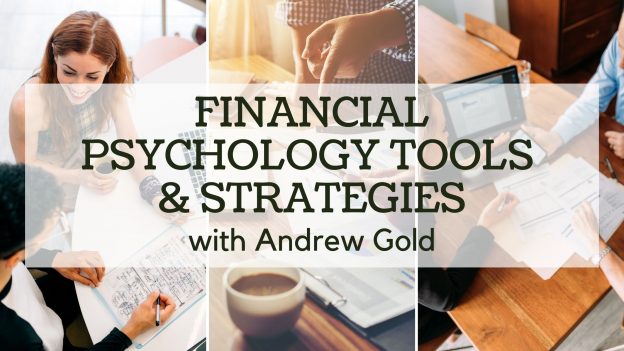Financial psychology is a revolutionary concept for advisors, yet few think about how to integrate it into their practice.
It can improve your relationships with current clients, make it easier to land new clients, and reduce your spending on marketing. To learn more about how to integrate the field into an advising practice, we sat down with Andrew Gold.
Andrew Gold is a Financial Advisor at Prestige Wealth Management in the Dallas Fort Worth area. He is in charge of their Investment Strategy and has personally seen how financial psychology has played a role in his relationship with advising clients.
What does financial psychology mean to you?
To me the term “Financial Psychology” means a focus on the good behaviors that come with saving and investing and controlling our behavior than it does about beating the market alone which is why we focus heavily on acknowledging and confronting our natural tendencies which historically have led us to making poor financial decisions. In today’s age, the overwhelming amount of information and choices that the retail investors have at their fingertips can be even more dangerous because of how quickly we can succumb to our emotions. So when it comes to advising clients we believe that it is important to know our clients perspective and historical investment exposure and experience in order to be able to properly advise. For example, it is important to know if your client is just now for the first time seeing money outside their 401k and fluctuating in the daily market versus if they had attempted self managing in the past.
How does your clients’ psychology impact your advising relationships and their financial decisions?
The reality is that advisors are telling clients everyday to “invest for the long run”, “buy and hold,” “ignore the noise,” and “stick to the plan” and they all sound great, but fail to recognize that the emotions that come along with market volatility disrupt even the best laid plans. Instead an advisor should help their clients challenge this conventional thinking, something we discuss with our clients all the time.
What specific strategies or tools do you use to figure out your clients’ financial priorities?
Some of the main things that we like to bring up with clients are:
- We are not irrational, we are human.
- Set realistic expectations. Discuss “normal” volatility..
- Discipline in behavior leads more directly to success in financial markets than investment strategy alone. Smart investing requires an equal balance between the right plan and the right mindset. Dollar cost average. Rebalance. Dividends and compounding work.
- Prepare, don’t predict. Market timing is very hard and speculation while fun is no replacement for a sound investment strategy.
- Understanding that the system is built for success. Over a 15 year period you have a 99% chance of growing your wealth, the only deciding factor is how many times over will you grow it. So instead of focusing on “beating the market” and beating an arbitrary index or outpacing other investors, let’s focus on achieving the things that really matter to us—a new home, a college education, or a comfortable retirement.
What do you believe is the role of an advisor in contributing to their client’s financial knowledge?
As an advisor we have to focus on being the best educator and accountability partner to our clients, and not just an advisor running a business. There is a very big responsibility that comes with discussing the most intimate details of our clients lives and knowing more about their dirty laundry than 99% of their inner circle. If we can focus on creating better investors and training the right behaviors, not only will our clients have more success but it will prepare them to embrace the opportunity that comes with large corrections in the market from time to time.
Takeaway
At the end of the day, understanding your clients’ financial psychology comes down to managing their expectations and understanding their specific financial goals so you can better allocate their investments. Your advising practice should be about serving your clients in the best way for them with tools like Moneymax, not using cookie cutter financial advice.










